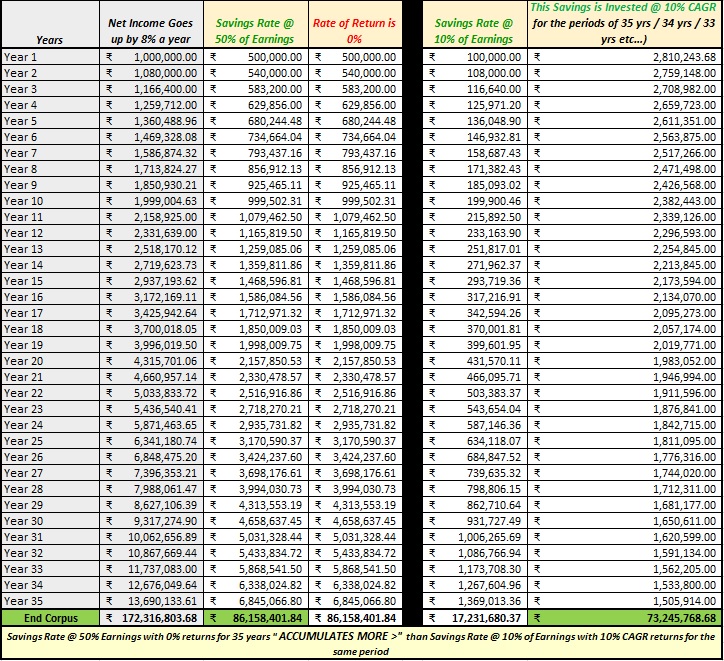Let me bust this myth of High Returns to be achieved for a Better future living standard
Case study –
2 Individuals earning ₹ 10 L each net credit as their Income in year 1
Both their incomes consistently grow at 8% YoY, for the next 35 years (Official Inflation rate is taken care)
One saves 50% of earnings and spends 50%, but never invests….all his money is earning 0% return for 35 yrs (assumption for the case)
The other saves a mandatory 10% & invests this savings at a CAGR of 10% per year, for the respective durations until the end of 35th year, but spends the remaining 90%
Both lead a reasonably happy life fulfilling each one’s needs (as they thought)
After 35 years…. Who has a higher accumulated corpus?
Individual 1
Or
Individual 2
?

Here is the answer….
At the end of 35 years – Individual 1 ends up with a higher corpus than Individual 2
0% return beats 10% returns ?
How?
Simple
Higher Savings Rate from Earnings
The problem many face is saving higher from the earnings.
Get that right, returns probably wouldn’t matter
By the way…I could have simple put a returns fig of 3% CAGR as a savings bank rate or even an FD….the equation tilts further into Individual 1 ?
Returns don’t matter if one saves enough
Save more from Earnings
Don’t lose money
These are the 2 critical elements
Adding returns to the higher savings rate is a super bonus 🙂
